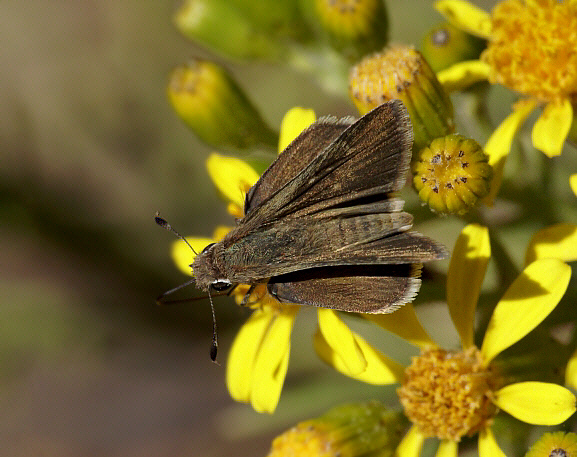
Introduction
There are over 1040 species of Grass Skipper ( Hesperiinae ) found in the neotropical region, many of which are almost impossible to identify from photographs. A great many of them are dark brown in colour, and unmarked. Even if they do have markings these are often obscure, and there will be several dozen near-identical species which can only be told apart by microscopically examining the genitalia. Because of these obstacles to identification most lepidopterists ignore these species, and refer to them collectively and contemptuously as ‘dull brown jobs’. Nevertheless there are always a few clues that can provide pointers to a positive ID. The butterfly depicted above for example has antennae with noticeably flattened clubs that are strongly hooked at the tip. Another clue lies in the series of vague pale or semi-hyaline dash-shaped markings abutting the costa of the forewing. The high altitude at which the butterfly was found also considerably narrows the choice of candidates.
There are 11 species in the genus Nastra, 3 of which occur in the southern United States, while the remainder are distributed variously from Mexico to Bolivia and Argentina.
Nastra chao is found in Peru and Bolivia.
Habitats
This species inhabits arid scrubby terrain at elevations between about 2000-3500m.
Lifecycle
Unknown. The eggs of other Nastra species, are typically whitish or straw coloured, and laid singly on grass blades. The larvae, in common with those of most other Hesperiine skippers almost certainly shelter by day within a silked tube at the base of grasses, and emerge at dusk to feed on a variety of grasses ( most Hesperiine larvae progress from finer grasses to coarser species as they mature ). They are likely to be greenish in colour with fine longitudinal lines and will possess caudal prongs – a pair of short anal projections that are used to flick the droppings clear of the feeding site.
Adult behaviour
No observations other than that the butterfly nectars at Senecio, and holds its wings in the typical Hesperiine posture when feeding and basking.
